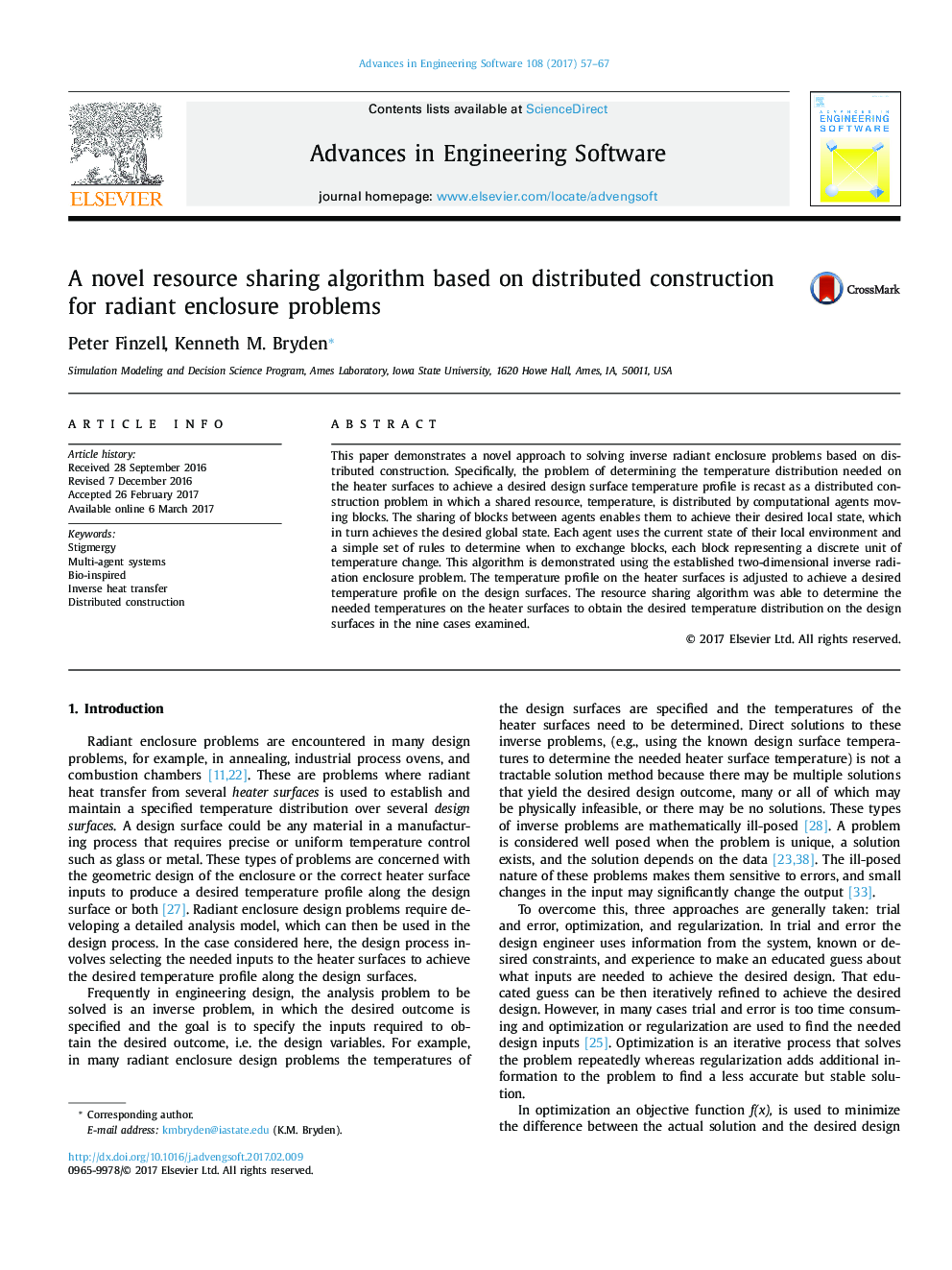| کد مقاله | کد نشریه | سال انتشار | مقاله انگلیسی | نسخه تمام متن |
|---|---|---|---|---|
| 4977960 | 1452109 | 2017 | 11 صفحه PDF | دانلود رایگان |
عنوان انگلیسی مقاله ISI
A novel resource sharing algorithm based on distributed construction for radiant enclosure problems
ترجمه فارسی عنوان
یک الگوریتم به اشتراک گذاری منابع جدید بر اساس ساختار توزیع شده برای مشکلات محدوده تابشی
دانلود مقاله + سفارش ترجمه
دانلود مقاله ISI انگلیسی
رایگان برای ایرانیان
کلمات کلیدی
استقامتی، سیستم های چندگانه، بیو الهام گرفته، انتقال حرارت معکوس، ساخت توزیع شده،
ترجمه چکیده
این مقاله روشی جدید برای حل مسائل محدوده شعاعی معکوس بر اساس ساخت و ساز توزیع را نشان می دهد. به طور خاص، مشکل تعیین توزیع درجه حرارت مورد نیاز در سطوح بخاری برای دستیابی به یک درجه حرارت مطلوب طراحی سطح، به عنوان یک مشکل ساختاری توزیع شده که در آن یک منبع مشترک، درجه حرارت، توسط بلوک های متحرک محاسباتی توزیع شده است، به عنوان یک مسئله ساخت مجدد ارائه می شود. به اشتراک گذاری بلوک های بین عوامل اجازه می دهد آنها را به رسیدن به دولت محلی مورد نظر خود، که به نوبه خود به دست آوردن دولت مطلوب جهانی است. هر عامل از وضعیت فعلی محله محلی خود و یک مجموعه ساده از قوانین برای تعیین زمانی که برای مبادله بلوک استفاده می کند، هر بلوک نشان دهنده یک واحد گسسته تغییر درجه حرارت است. این الگوریتم با استفاده از مسئله محصورۀ تابشی معکوس دو بعدی ساخته شده است. پروفیل درجه حرارت در سطوح بخاری برای رسیدن به مشخصات درجه حرارت مورد نظر در سطوح طراحی تنظیم می شود. الگوریتم به اشتراک گذاری منابع قادر به تعیین درجه حرارت مورد نیاز در سطوح بخاری بود تا توزیع درجه حرارت مورد نظر در سطوح طراحی در 9 مورد مورد بررسی قرار گیرد.
موضوعات مرتبط
مهندسی و علوم پایه
مهندسی کامپیوتر
نرم افزار
چکیده انگلیسی
This paper demonstrates a novel approach to solving inverse radiant enclosure problems based on distributed construction. Specifically, the problem of determining the temperature distribution needed on the heater surfaces to achieve a desired design surface temperature profile is recast as a distributed construction problem in which a shared resource, temperature, is distributed by computational agents moving blocks. The sharing of blocks between agents enables them to achieve their desired local state, which in turn achieves the desired global state. Each agent uses the current state of their local environment and a simple set of rules to determine when to exchange blocks, each block representing a discrete unit of temperature change. This algorithm is demonstrated using the established two-dimensional inverse radiation enclosure problem. The temperature profile on the heater surfaces is adjusted to achieve a desired temperature profile on the design surfaces. The resource sharing algorithm was able to determine the needed temperatures on the heater surfaces to obtain the desired temperature distribution on the design surfaces in the nine cases examined.
ناشر
Database: Elsevier - ScienceDirect (ساینس دایرکت)
Journal: Advances in Engineering Software - Volume 108, June 2017, Pages 57-67
Journal: Advances in Engineering Software - Volume 108, June 2017, Pages 57-67
نویسندگان
Peter Finzell, Kenneth M. Bryden,
